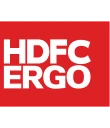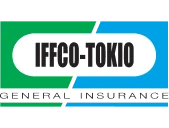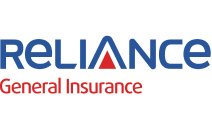A bike insurance claim is when a demand is made on the insurance company to compensate the policyholder for damages incurred to the bike or because of the bike due to covered perils. The insurance company then compensates for the financial loss suffered and settles the claim.
When does a bike insurance claim occur?
A bike insurance claim is said to occur in the following circumstances –
- Theft of the bike
When the bike is stolen, a claim takes place. If the bike is not recovered, the insurance company pays the Insured Declared Value of the policy which is also the sum insured. - Third party liability
If, due to the bike, any third party (any individual besides the insurance company and the policyholder) gets physically hurt or is killed, a third party liability arises. Even if the bike damages any third party property, a third party liability arises. In that case, the policyholder is financially liable to compensate the third party for the damages caused. A bike insurance policy covers such financial liabilities. Thus, in case any third party liability arises, a claim is made in the bike insurance policy. The company compensates the third party on behalf of the policyholder. - Own damage
If the bike itself is damaged due to natural or man-made perils, an own damage claim arises. The insurance company pays for the repair costs of the bike.
Top Bike Insurance Plans
| Bike Insurance Company | Best Features | Motor Incurred Claim Ratio (2020-21) | Network Garages |
| Magma HDI Two-wheeler Insurance Package Policy | * This policy offers a personal accident add-on that permits an accident cover for the pillion as well. * The premium is quite affordable as there are captivating discounts available. |
78.91% | 3300+ network garages |
| Go Digit Two Wheeler Insurance | * If there are no claims under the plan you can avail of up to 50% discounts. * For a wider coverage aspect, this plan offers five optional covers. |
74.91% | 2900+ network garages |
| IFFCO Tokio General Insurance | * This plan offers self-damage cover as well as damage to the third party. * Choosing this plan will help you get up to 70% savings on premiums. |
84.04% | 4300+ network garages |
| Reliance General Insurance | * By choosing this plan you get access to easy video claims as well. * There are different add-ons available for customer satisfaction. |
76.89% | 6200+ network garages |
| New India Two Wheeler Insurance | * There are various plans available which suit the needs of every customer. * These policies are fairly priced. |
78.20% | 216 network garages |
| ICICI Lombard Two-wheeler Insurance Policy | * This plan is highly customisable as there are varieties of add-ons available. * This plan can be chosen for various time periods. |
65.77% | 4800+ network garages |
| Bajaj Allianz General Insurance Company Limited | * The company is known for settling its claim in a record time. * There are numerous policies offered by this company for every consumer. |
68.06% | Major garages are covered by Bajaj Allianz General Insurance Company. |
| SBI General Insurance Company Limited | * This brand offers specific discounts if the customer’s age is between 25 to 55 years. * There are various price ranges depending on the customer’s profile. |
68.10% | SBI has a strong network of cashless garages available in most states |
| HDFC ERGO General Insurance Company Limited | * This plan offers doorstep repair service for the customers. * Roadside assistance is also covered in this plan. |
70.02% | 7600+ network garages |
| Universal Sompo General Insurance Company Limited | * The policy offered by this brand covers its own damage as well as third-party under the same plan. * If the customer wants higher voluntary access there is also a provision for a discount in that. |
87.96% | 3500+ network garage |
Types of Two-Wheeler Insurance Policies
| Types of Bike Insurance Policies | Salient Features |
| Comprehensive Bike Insurance | * It covers the damage of the bike, driver, as well as third party loss of person and property due to the accident. * Accidental cover, death cover of the third party and the driver, damages due to natural calamities and man-made, theft, movement through rail or air. |
| Third-party liability policy | * It covers the loss caused only to the third-party person or property. * Covers the physical damage of a third party or death due to an accident. Also covers third-party property damage. |
| Standalone Policy | * The policy covers the own-vehicle damage and also third-party liability. * Provides coverage against man-made and natural calamities and accidental covers. * One can choose add-on riders to widen the benefits. |
| Bundled Policy | * Under this policy, one can avail of 5 years of third-party liability for their bike and one year of own-damage benefits. |
The process of filing a bike insurance claim
The process of filing a bike insurance claim depends on the type of claim incurred.
In case of theft
- Report the theft to the insurance company immediately. The company would provide you with a claim reference number which is to be used in future correspondences.
- File a FIR with the local police. The FIR is mandatory in theft cases.
- Fill up the claim form of your bike insurance policy. Attach the copies of your driving license, RC book of the bike, policy bond and FIR. The duplicate key of the bike might also be required to be submitted to eliminate the possibility of theft due to your negligence.
- Once the claim is filed, wait for the bike to be recovered.
- If the bike is not recovered within three months of theft, the police would issue a ‘Non traceable Report’.
- This report is to be submitted to the insurance company to avail the settlement of your claim
- The insurance company would pay the Insured Declared Value of the policy to settle the claim.
In case of third party claim
- Inform the insurance company immediately of the claim. You would be given the claim reference number for future follow-ups.
- File a FIR with the police. A police FIR is a mandatory requirement in case of third party claims
- The third party incidence would be taken to the Motor Accidents Claim Tribunal (MACT) which would declare the extent of financial liability.
- Meanwhile, you should fill up a claim form, attach the relevant documents like your driving license, RC book, etc. and the police FIR. Submit the documents to the insurance company to file your claim.
- Once the amount of liability is declared by MACT, the insurance company would pay for the liability on your behalf and the claim would be settled
In case of own damage claim
- Inform the company immediately about the damages suffered and the nature of damages.
- Upon receiving a claim notification, the insurance company would provide a claim reference number and guide you to take your bike to the nearest preferred garage.
- If the bike is in no condition to be taken to the nearest garage, the insurance company might also arrange for a towing facility depending upon the coverage of the plan
- Once the bike is taken to the nearest garage, a surveyor of the insurance company visits the garage to determine the extent of claim suffered. The surveyor prepares a claim estimate based on the inspection of the damages.
- The surveyor then approves the claim and the repair works start. The surveyor also submits the claim estimate to the insurance company
- Once the repairs are completed, the insurance company settles the bills directly with the garage. You might have to bear a portion of the claim yourself.
- After you pay for your part of the claim, the claim is settled and you can take delivery of your bike.
Types of claims
Bike insurance claims can be of two types – cashless and reimbursement.
- Cashless – if the bike is taken to the preferred garage mentioned by the insurance company, the claim is settled directly by the company. This is called cashless settlement of claim
- Reimbursement – if the bike is repaired at a non-networked garage, the policyholder would have to pay for the repair costs himself. Once the bike is repaired and delivered, the policyholder submits the repair bills to the insurance company. The company assesses the bills and reimburses the policyholder for the costs incurred.
Documents required for filing a two-wheeler Claim
Every bike insurance claim requires the policyholder to submit some documents along with the claim form. These documents are as follows
- RC Book of the bike
Registration Certificate provided along with the bike when purchased, has to be submitted. - Driving license of the owner/driver of the bike
- Copy of the policy papers
The bond papers that were handed over to the customer after the approval of the bike insurance plan. - FIR, where needed
- Any other documents as needed by the insurer
Company-specific documents have to be submitted. It may vary from company to company.
Add-On Cover for Two-Wheeler Insurance
| Add-On Covers | Salient Features |
| Zero depreciation add-on | * This add-on helps save the depreciation cost that the insurance company calculates and deducts from the claim amount. |
| Roadside assistance add-on | * 24*7 assistance add-on that assists you in case of a breakdown in the middle of nowhere. * Inform the insurance company and they will provide immediate assistance for electrical breakdown, flat tyres, loss of fuel, vehicle tow etc. |
| NCB protect add-on | * This add-on helps you keep the stacked No Claim Bonus intact even after making a claim. * It is beneficial for people who often lose out on their NCB when they make a claim. |
| Lost key replacement | * Helps you cover the cost of purchasing a new key if the original is lost or stolen. |
| Medical expenses add-on | * Medical expenses due to an accident on a bike are covered. |
| Personal accident cover for the pillion rider | * Under this add-on, the accidental damage of the pillion rider is also covered. |
| Consumables cover | * Helps in covering the cost of consumables that are not covered under the insurance plan. * It includes the cost of engine oil, lubricant, nuts, screws, bolts, etc. |
| Return to invoice | * The market depreciation value of the bike is paid if damaged beyond repairs. It also covers thievery loss. * Claim paid is equal to the invoice value of the two-wheeler. |
When is a bike insurance claim not accepted?
Though insurers settle your bike insurance claims in most of the cases, in some cases, your claims might not get accepted. Such instances in which your claims might not get accepted include the following
- Excluded claims
There are some instances which are not covered by bike insurance policies. For instance, claims occurring when driving without a valid license or when under the influence of alcohol or drugs are specifically excluded from the scope of coverage. In such cases, if a claim is made, it would subsequently be rejected. So, when making a claim in your bike insurance policy, check whether the claim is covered by the policy or not. - Improper paperwork
If you do not submit the right paperwork at the time of claims, your claims might not get accepted. That is why it is important to keep all claim-related documents handy so that you can submit them when needed. - Delaying the claim
You are required to inform the insurer of your claim immediately. If you do not inform the insurer immediately and inform after a considerable period has passed, the insurer might question the authenticity of your claim. In such cases, the claim might not get accepted.
Things to keep in mind
Though the bike insurance claim process is quite easy, there are some things which the policyholder should keep in mind when making a claim. These things are as follows
- Compulsory excess
There is a compulsory excess amount in all bike insurance policies. In each claim, the amount of compulsory excess is to be borne by the policyholder. There is also a concept of voluntary excess where the policyholder voluntarily chooses to bear a portion of his bike insurance claim to avail premium discounts. So, when the claim is settled, the policyholder would have to bear the compulsory and voluntary excess (if any). - The effect of depreciation
In case of own damage claims, the insurance company pays for the repair costs after deducting the applicable depreciation on the parts of the bike. This deducted depreciation would have to paid by the policyholder to settle the repair bills.














